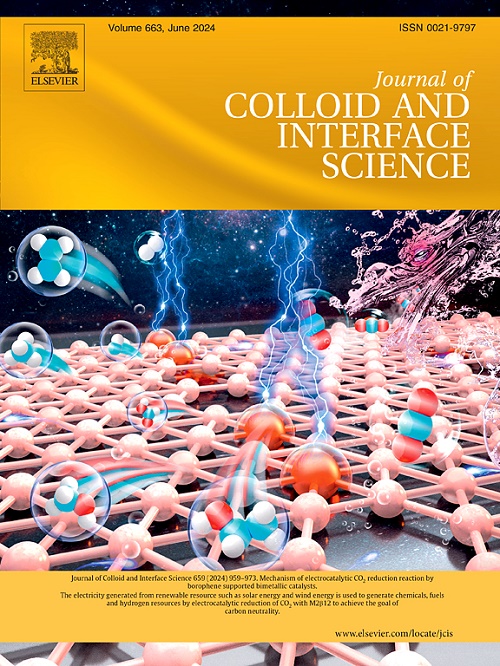Hydrogel-based bimodal sensors for high-sensitivity independent detection of temperature and strain
IF 9.4
1区 化学
Q1 CHEMISTRY, PHYSICAL
引用次数: 0
Abstract
Avoiding crosstalk between strain and temperature detection is crucial for bimodal hydrogel sensors, yet achieving high sensitivity for both parameters while maintaining signal decoupling remains a significant challenge. In this study, a bimodal sensor was developed by locally coating poly (3,4-ethylene dioxythiophene): polystyrene sulfonate (PEDOT: PSS) onto the hydrogel surface, creating distinct regions for strain and temperature detection. These regions form localized strain concentration zones and wrinkle structures, respectively. The localized strain concentration enhances the sensor’s sensitivity from 8.5 to 18.5. Additionally, the sensor demonstrates a low detection limit (0.2 %), a wide detection range (up to 1356 %), a fast response time, and excellent cyclic stability for strain measurements. The temperature detection region, leveraging the thermoelectric effect, improves the Seebeck coefficient of the PEDOT: PSS coating from 20 to 122.86 μVK−1 through de-doping and energy band modulation. Moreover, the temperature sensing of the PEDOT: PSS coating features good cyclic stability, a rapid response time, and versatile testing capabilities. This innovative structural design effectively decouples strain and temperature signals across a broad strain range (0–600 %). These sensors hold potential applications in human health monitoring and as electronic skin for flexible robotics.

基于水凝胶的双模传感器,可独立进行高灵敏度的温度和应变检测。
避免应变和温度检测之间的串扰对于双模水凝胶传感器来说至关重要,但在保持信号解耦的同时实现两个参数的高灵敏度仍然是一项重大挑战。在这项研究中,通过在水凝胶表面局部涂覆聚(3,4-乙烯二氧噻吩):聚苯乙烯磺酸盐(PEDOT:PSS),开发出了一种双模传感器,形成了用于检测应变和温度的不同区域。这些区域分别形成局部应变集中区和皱纹结构。局部应变集中区将传感器的灵敏度从 8.5 提高到 18.5。此外,该传感器还具有低检测限(0.2%)、宽检测范围(高达 1356%)、快速响应时间和出色的应变测量周期稳定性。温度检测区域利用热电效应提高了 PEDOT.PSS 涂层的塞贝克系数,从 20% 提高到 122.0%:PSS 涂层的塞贝克系数从 20 μVK-1 提高到 122.86 μVK-1。此外,PEDOT: PSS 涂层的温度传感具有良好的循环稳定性:PSS 涂层具有良好的循环稳定性、快速响应时间和多功能测试能力。这种创新的结构设计可在较宽的应变范围(0-600%)内有效地解耦应变和温度信号。这些传感器有望应用于人体健康监测和柔性机器人的电子皮肤。
本文章由计算机程序翻译,如有差异,请以英文原文为准。
求助全文
约1分钟内获得全文
求助全文
来源期刊
CiteScore
16.10
自引率
7.10%
发文量
2568
审稿时长
2 months
期刊介绍:
The Journal of Colloid and Interface Science publishes original research findings on the fundamental principles of colloid and interface science, as well as innovative applications in various fields. The criteria for publication include impact, quality, novelty, and originality.
Emphasis:
The journal emphasizes fundamental scientific innovation within the following categories:
A.Colloidal Materials and Nanomaterials
B.Soft Colloidal and Self-Assembly Systems
C.Adsorption, Catalysis, and Electrochemistry
D.Interfacial Processes, Capillarity, and Wetting
E.Biomaterials and Nanomedicine
F.Energy Conversion and Storage, and Environmental Technologies

 求助内容:
求助内容: 应助结果提醒方式:
应助结果提醒方式:


